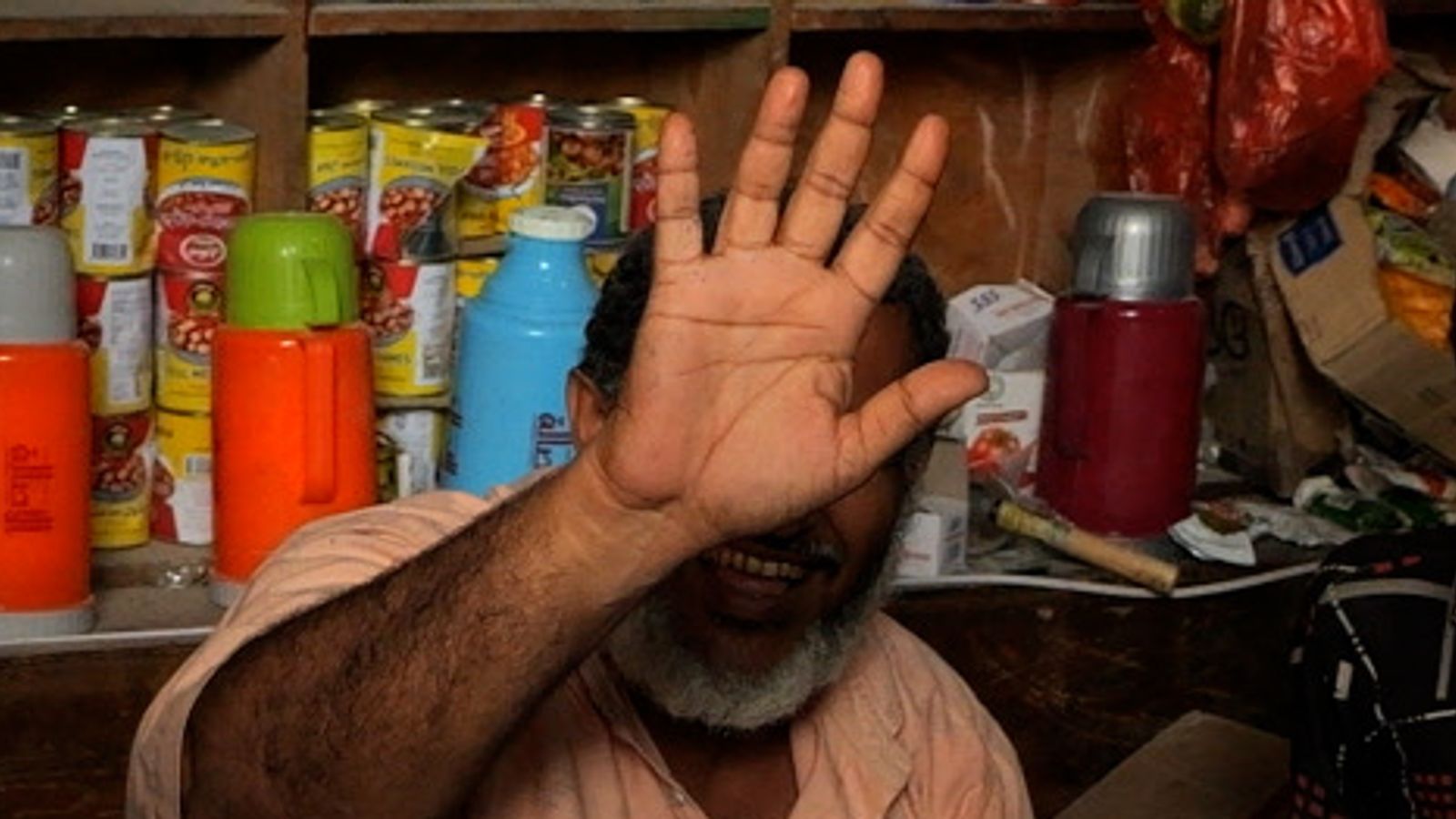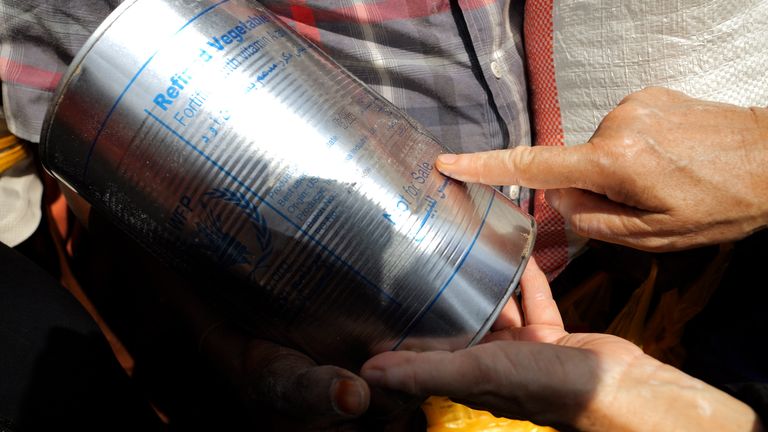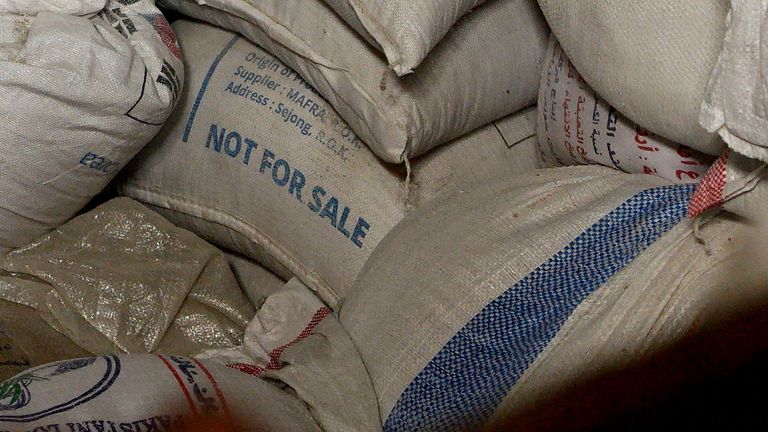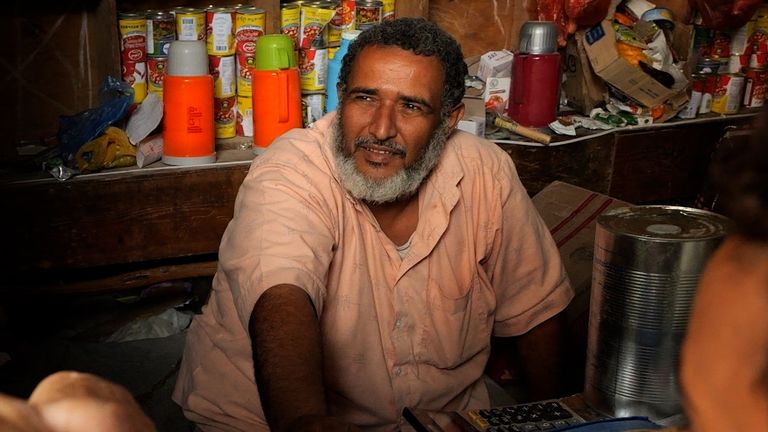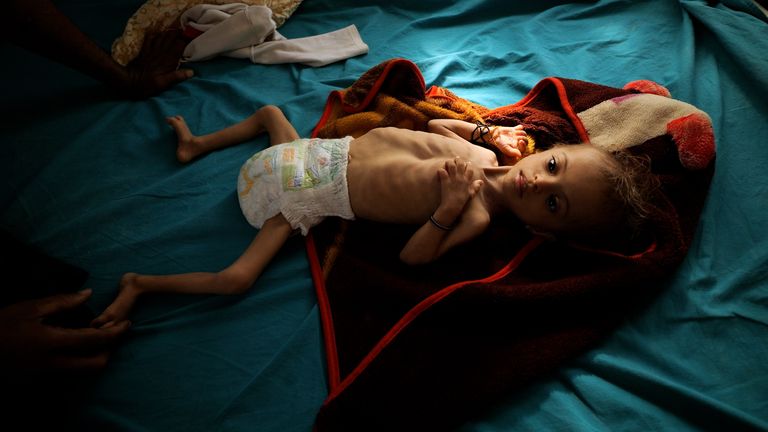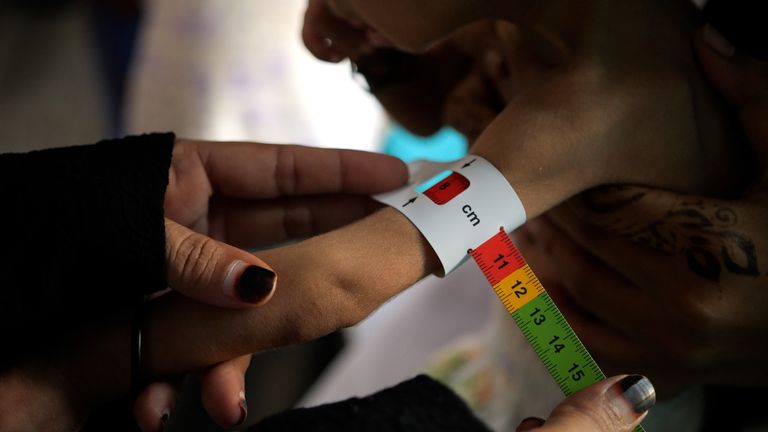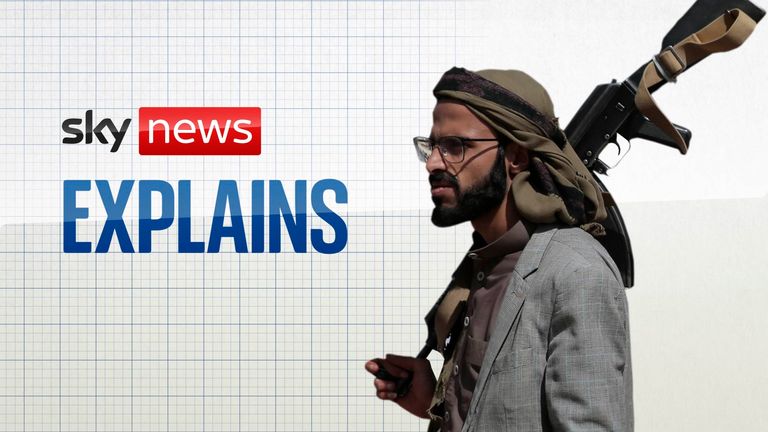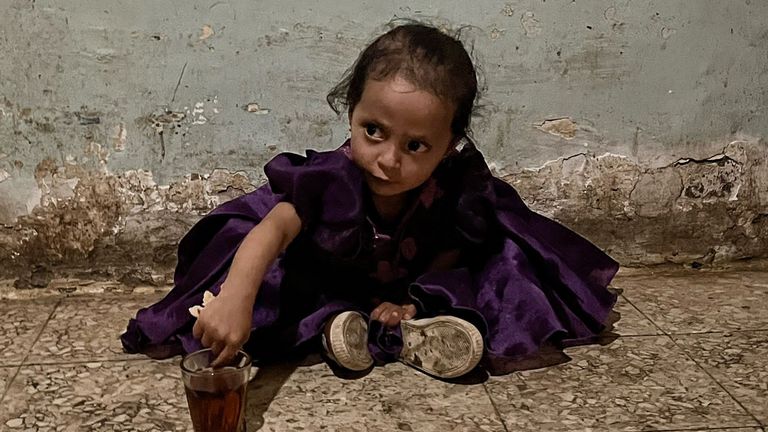A Sky News team inside Yemen has discovered shocking evidence that donated UN food aid meant for the most needy is instead being sold in street markets to help boost stallholders’ profits.
We found that donated cans of vegetable oil with World Food Programme (WFP) stamps on them were among the essential food items being sold in the province of Hodeidah. Alongside the WFP stamp, there were clear signs in English on the can saying “not for sale”.
In the same market stall in al Khokha, our investigations revealed sacks of flour and rice, also with large lettering saying “not for sale”, which appeared to have been donated by aid agencies from South Korea.
Warning: This article contains images some may find distressing
When we confronted the shopkeeper, he at first denied he was selling donated food aid. He then tried to hide the incriminating World Food Programme cereal packets that we had spotted on his counter.
When we continued to press him and drew attention to large supplies of the donated cereal at the back of his store, he admitted he knew he was not meant to be selling the donated goods.
He then insisted he would halt the practice that day – an assurance which few who heard him actually believed, given the large stock of donated aid he had in his small store.
But he insisted that he was certainly not the only stallholder selling food aid – and that he was fulfilling a “service” to desperate villagers.
“People come to me who have received the food aid but they need to sell it to me so they can buy medicine for their children. They sell it and I buy it in an emergency,” he attempted to explain.
Our investigation comes as the United Nations latest figures showed that children are the biggest victims in Yemen’s eight-year-old war.
According to UN figures, a child dies in Yemen every 10 minutes from preventable causes. That is a staggeringly high number of unnecessary deaths.
There are an estimated 11 million children who are identified as needing humanitarian aid in Yemen.
We are the first foreign journalist team inside Yemen since Iran and Saudi Arabia announced a dramatic breakthrough which has taken the country the closest it has got to possible peace in the eight years of conflict.
What we’ve discovered is both heartbreaking and shocking.
Ahad emaciated and weak
We saw a three-year-old little girl called Ahad being brought into a remote, basic clinic in al Khokha to try to get help.
Her ribs were protruding through her stretched skin. Her eyes were huge in the centre of a gaunt face and her limbs seemed massively elongated because of the lack of muscle or fat anywhere on her body.
She weighed just 3kg – at three years of age – that’s less than what an average newborn weighs fresh out of their mother’s womb.
Ahad couldn’t stand or sit because she was so emaciated and weak. She has Down’s syndrome too which is rarely seen here and the nurses who’re trying to care for her seem powerless to stop her slow inexorable decline. She is literally starving to death.
She’d only relatively recently been discharged from the small field hospital which operates here – just 10 days ago when she’d reached 4kg. In less than a fortnight, she’d dropped a kilo that she simply cannot afford to lose and which could cost her life.
Her father Saeed Saleh told us: “She just keeps bringing up the food we give her. She can’t seem to keep anything down.”
The tragedy for Yemen is that she is certainly not a rare case. At the same time as Ahad was being re-admitted, a six-month-old baby boy called Abdullah Mohammed Abdullah was crying in the arms of his 16-year-old mother.
As she rocked him backward and forward and tried to comfort her baby boy, the nurses noted she too looked malnourished.
She was certainly struggling to breastfeed. That could have explained why her little boy was a mass of skin and bone with the same huge starving eyes peering out from a skeletal face and body where the line of every rib can be clearly seen.
Read more:
Victims of forgotten war
There seems to be desperation and starvation everywhere. At the al Jasha camp for internally displaced people (IDP), there are nearly 9,000 people living in squalor. It is a place where only misery is guaranteed.
Within seconds of us arriving, we were surrounded by angry people begging us for help and insisting in loud voices they were desperate and they were hungry.
“We don’t have anything to eat. Not even a little bit of rice. Nothing. We are suffocating, we are dying,” one man yells.
The UN humanitarian chief recently warned that essential aid programmes were being closed down because of funding cuts and food rations had been reduced for eight million people in Yemen.
For a country in the grips of a humanitarian catastrophe it’s a bleak and terrifying future for millions.
Alex Crawford reports from Yemen with Middle East editor Zein Ja’far, cameraman Jake Britton and Yemen producer Ahmed Baider
